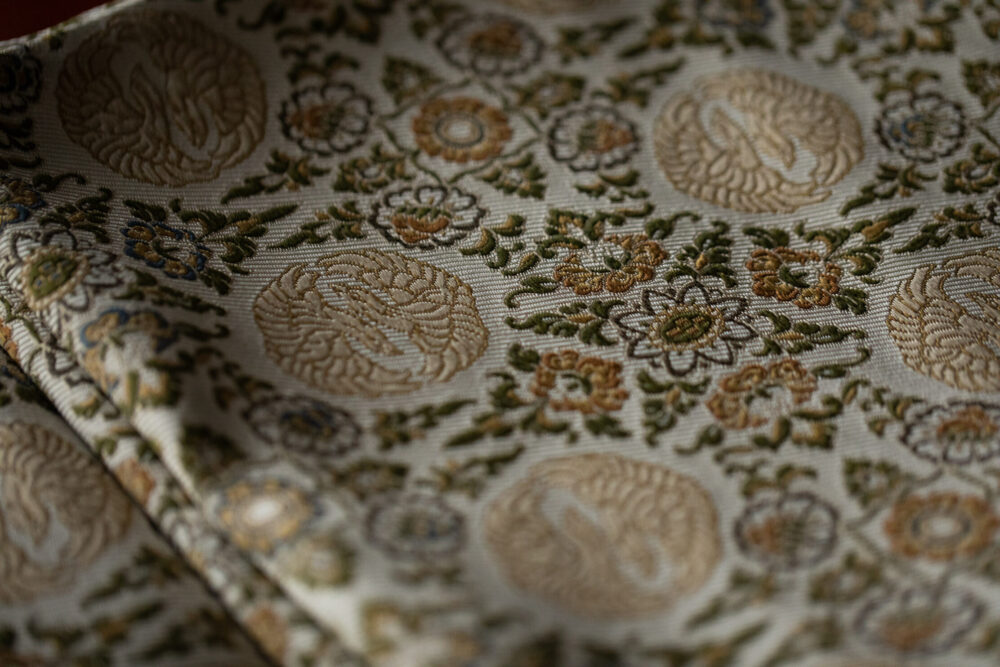Kimonos


THINGS TO WEAR
In the Heian era, layered kimonos were tied loosely with a thin koshi-himo belt. Starting in the Momoyama era when the very foundation of lifestyles began to undergo changes, the belt took on a more functional wearing style. Everyday kimonos were kosode, accompanied by the obi belt. Entering the Edo era, the obi belt width became approximately 7.6 cm – 9.5 cm, and the obi belt finally reached its final form as an ornamental accessory.
And in the late Edo era, by the Genroku period (1688-1704), the obi belt achieved the format that is almost exactly what is seen today, with measurements at approximately 34.1 cm wide and 4.5 m long, changing into a more luxurious and glamorous item.
Incidentally, concerning the current fukuro obi belt, in the 19th century (1801) French inventor Joseph Marie Jacquard invented an automated loom called the Jacquard loom, and subsequently fabric for fukuro obi belts finally came to be woven in Japan as well from the early Showa era onward, leading to the appearance of modern karaori-weave fabrics and the like in markets.